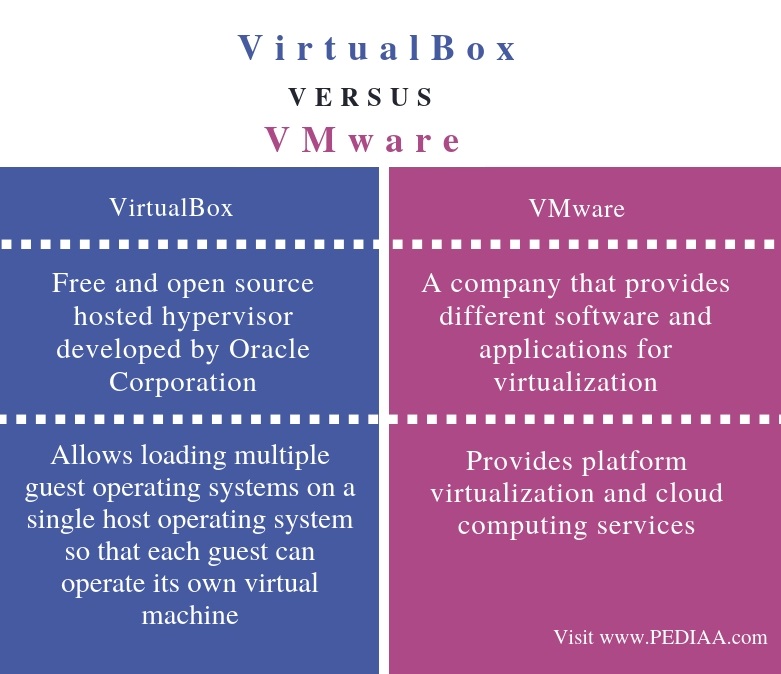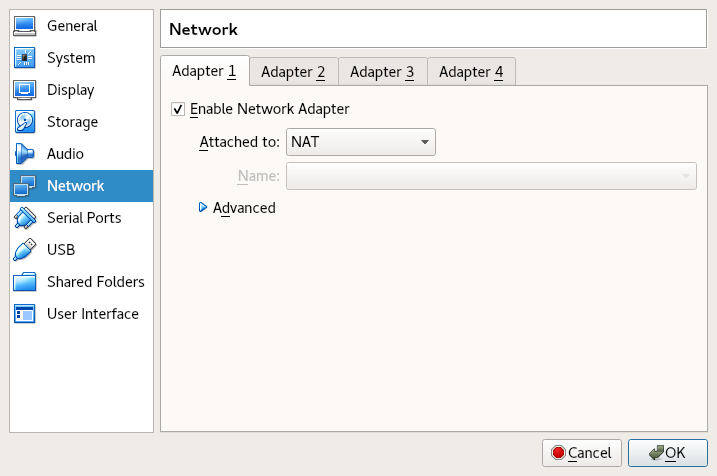

- #VMWARE VS VIRTUALBOX 2019 INSTALL#
- #VMWARE VS VIRTUALBOX 2019 UPDATE#
- #VMWARE VS VIRTUALBOX 2019 WINDOWS 10#
- #VMWARE VS VIRTUALBOX 2019 SOFTWARE#
Those simpler benchmarkers provided a sense that the non-updated VMware VM might be a little faster than the updated VMware VM, but still wasn’t faster overall than VirtualBox. To address that, I tried several simpler benchmarking tools on a version of the VMware VM that did not have any updates installed, beyond the installation DVD’s built-in Service Pack 1 updates.

I considered the possibility that the Windows updates might have had an unequally negative impact on the VMware VM. VMware was easier to use, for purposes of file operations (e.g., copying or renaming VMs) on the other hand, VirtualBox offered features (e.g., snapshots) that were not available in VMware’s free Player. Of course, there were non-performance-related tradeoffs.

Although benchmarking programs varied in their results, it seemed pretty clear that VMware was not generally faster than VirtualBox. Those full-picture benchmarking tools supported an impression that VirtualBox was slightly faster than VMware Player - and, not surprisingly, that the host machine was, in most regards, much faster than either VM. On a machine with the requisite updates, I found that PassMark PerformanceTest 9, SiSoftware Sandra Lite 2017, and CrystalMark all provided relatively sophisticated general-purpose comparisons, though CrystalMark was only 32-bit. I found that most of these programs were component-oriented (measuring the performance of e.g., CPU or RAM), but PCMark10 provided a nice alternative, with a set of eight practical elements (e.g., spreadsheets, photo editing).
#VMWARE VS VIRTUALBOX 2019 INSTALL#
Nonetheless, I did go ahead, download and install the full supply of Windows updates, and run a variety of benchmarking programs.

That could work: I only needed these VMs to run programs like Adobe Premiere Elements and Microsoft Office.
#VMWARE VS VIRTUALBOX 2019 SOFTWARE#
It seemed that I might avoid the need for antivirus software by keeping my VMs offline.
#VMWARE VS VIRTUALBOX 2019 WINDOWS 10#
Windows updates could have a performance impact by imposing clutter by increasing exposure to Windows 7 instabilities, introduced by Microsoft starting in 2016, to push users toward Windows 10 and by requiring antivirus software, which itself could impose a major performance hit. So there was a choice of whether to install a lot of updates, which might themselves affect performance, or just settle for the relatively limited benchmarkers that would run without Windows updates. It turned out that the best benchmarkers required unspecified Windows updates. This post explores benchmarking programs, to find the best way of comparing VirtualBox and VMware.
#VMWARE VS VIRTUALBOX 2019 UPDATE#
Another post does update some aspects of VM benchmarking. As with other long posts in this blog, I may write a more concise version at some point in the future, if I revisit this question. This was a rough, first-cut exploration of numerous factors related to that question. The question considered in this post is whether one had visibly better performance than the other. As described in ( 1 2) other posts, I was looking at VirtualBox 5.2.6 and VMware Workstation Player 14.1.1 as possible ways to run certain software in a Windows 7 guest virtual machine (VM) on a Windows 10 host computer.


 0 kommentar(er)
0 kommentar(er)
